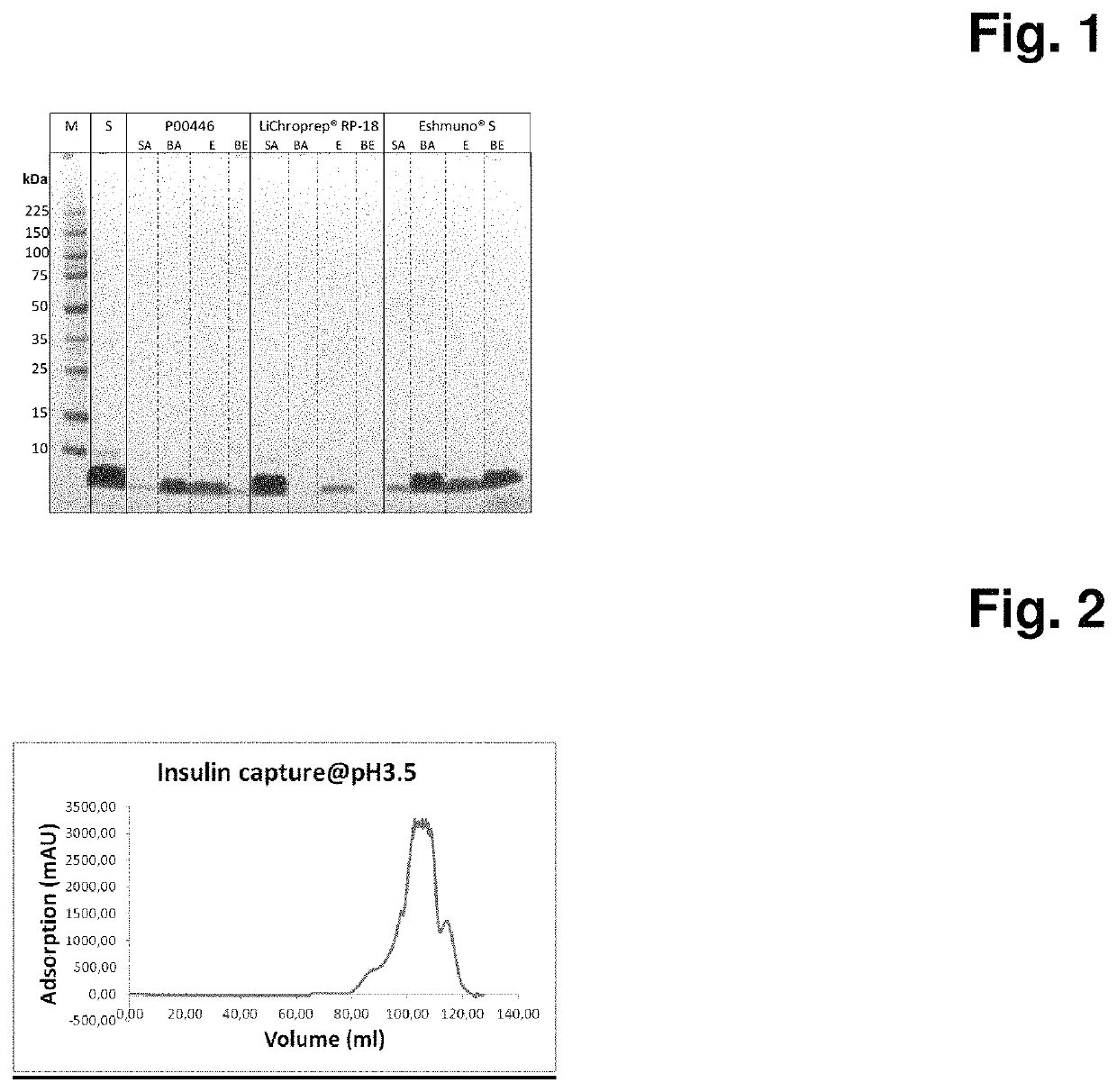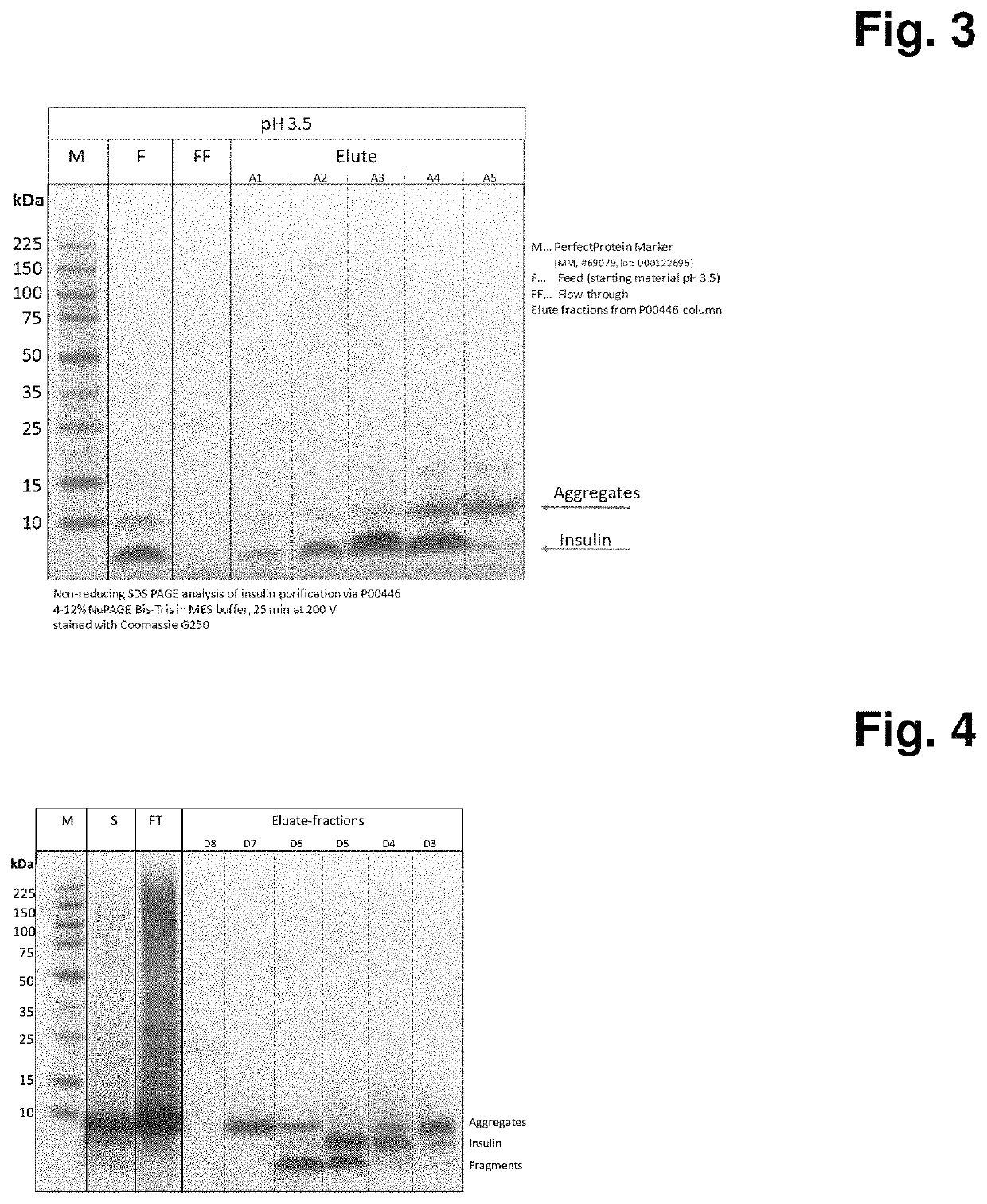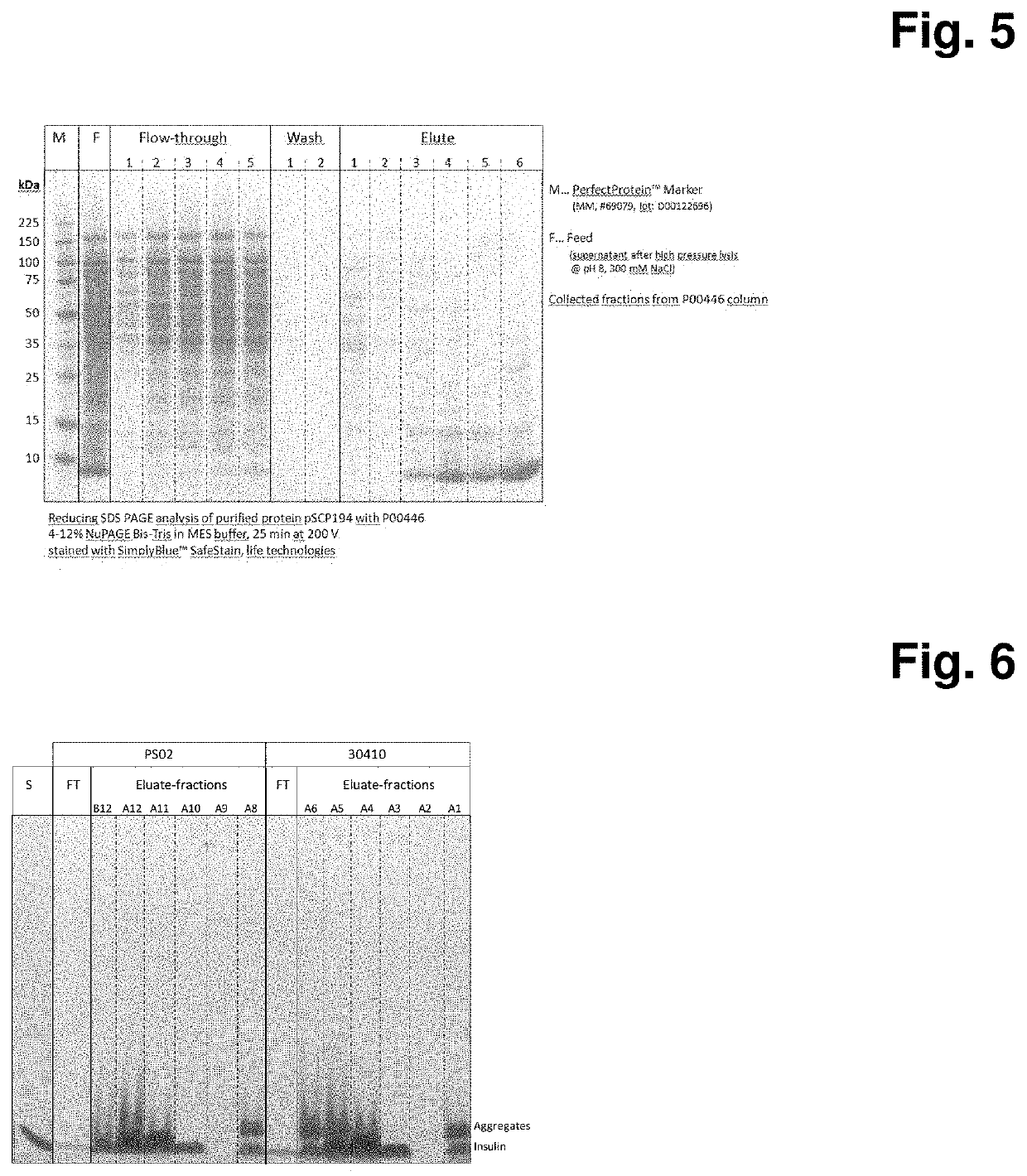Target molecule capture from crude solutions
a technology of crude solutions and target peptides, applied in the direction of peptides, organic chemistry, separation processes, etc., can solve the problems of complex purification process, high target peptide loss, and inefficient process, so as to reduce the level of critical impurities such as aggregates and target peptide fragments, accelerate the production process, and reduce the number of needed process steps
- Summary
- Abstract
- Description
- Claims
- Application Information
AI Technical Summary
Benefits of technology
Problems solved by technology
Method used
Image
Examples
example 1
[0104]In this experiment, different materials are evaluated for their ability to adsorb recombinant peptide-insulin. For the following example Polystyrene (PS) particles P00446 are used for capture of pure insulin (A11382IM, life technologies) in comparison to the common used LiChroprep® RP-18 (113900, Merck Millipore) beads and one cation exchange material (e.g. Eshmuno® S, 120078, Merck Millipore). 100 μl particles are washed with 1 ml of 50 mM Acetate pH 4. Afterwards 1 ml of a 5 mg / ml insulin solution in 50 mM Acetate pH 4 was adsorbed for 30 minutes at 25° C. After centrifugation the supernatant is removed (5 μl were mixed with 5 μl gel loading buffer, NP0007, life technologies). Particles are washed with 1 ml 50 mM Acetate pH 4 and split in 2 tubes. After centrifugation the supernatant is discarded. For beads after adsorption one part of the particles are resuspended in 500 μl gel loading buffer. The other part is eluted with 500 μl of 50 mM Acetate, 40 Vol % DPG, pH 4 respect...
example 2
[0106]In this experiment, different materials are evaluated for their ability to adsorb crude insulin A. For the following example Polystyrene (PS) particles P00446 are packed in a 10 mm diameter 12 mm long column using 20% ethanol 150 mM NaCl solution. The packed column is equilibrated using 50 mM Glycine / 50 mM Acetic acid buffer pH 3.5 for at least 20 column volumes at 1 ml / min. The crude insulin solution A is adjusted to pH 3.5 (insulin concentration˜1.7 g / L). 60 ml of obtained solution is directly loaded on the equilibrated column at 1 ml / min and the flow through fraction collected in a separate flask. After loading, column is washed with 10CV using equilibration solution. The elution of the captured crude insulin is performed using a gradient elution from 0-100% of 50% ethanol in 50 mM Glycine / 50 mM Acetic acid buffer pH 3.5 in 30 CV at 1 ml / min (FIG. 2). The fractions are collected and subjected to non-reducing SDS-PAGE analysis (FIG. 3).
[0107]As shown in FIG. 3 the polystyren...
example 3
[0108]In this experiment, particulate material, consisting of poly(ethy)styrene (m) crosslinked with divinylbenzene copolymers (PS-DVB), is evaluated for its ability to adsorb crude insulin B. For the following example Polystyrene (PS) particles P00446 are packed in a 10 mm diameter 12 mm long column using 20% ethanol 150 mM NaCl solution. The packed column is equilibrated using 50 mM TRIS, 100 mM Arginine buffer pH 7.0 for at least 20 column volumes at 1 ml / min. The crude insulin solution B originating from E. coli expression system is adjusted to pH 3.5 and 30 ml of obtained solution is directly loaded on the equilibrated column at 1 ml / min and the flow through fraction collected in a separate flask. After loading, column is washed with 10CV using equilibration solution. The elution of the captured crude insulin is performed using a gradient elution from 0-100% of 60% dipropylenglycol in 50 mM Glycine / 50 mM Acetic acid buffer pH 3.5 in 20 CV at 1 ml / min. The fractions are collecte...
PUM
| Property | Measurement | Unit |
|---|---|---|
| mean particle diameters | aaaaa | aaaaa |
| pore sizes | aaaaa | aaaaa |
| conductivity | aaaaa | aaaaa |
Abstract
Description
Claims
Application Information
 Login to View More
Login to View More - R&D
- Intellectual Property
- Life Sciences
- Materials
- Tech Scout
- Unparalleled Data Quality
- Higher Quality Content
- 60% Fewer Hallucinations
Browse by: Latest US Patents, China's latest patents, Technical Efficacy Thesaurus, Application Domain, Technology Topic, Popular Technical Reports.
© 2025 PatSnap. All rights reserved.Legal|Privacy policy|Modern Slavery Act Transparency Statement|Sitemap|About US| Contact US: help@patsnap.com



